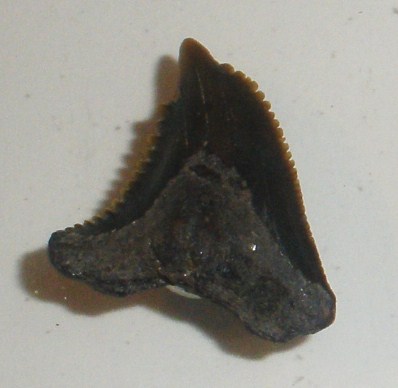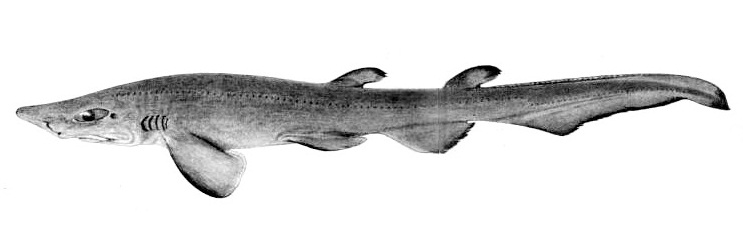|
Leitha Limestone
The Leitha Limestone is a geologic formation in Austria, Czech Republic, Hungary and Poland. It preserves fossils dated to the Middle to Late Miocene period. Fossil content Various fossils have been found in the formation: * '' Aetobatis irregularis'' * '' Araloselachus cuspidata'' * '' Carcharias (Hypoprion) sp.'' * '' Carcharias (Aprionodon) cf. collata'' * '' Carcharodon hastalis'' * '' Cetotherium priscum'' * ''Coris sigismundi'' * '' Eugaleus latus'' * '' Galeocerdo aduncus'' * ''Galeus aduncus'' * '' Galeus cf. canis'' * '' Halitherium schinzii'' * '' Heterodelphis leiodontus'' * '' Hemipristis serra'' * ''Isurus desorii'' * '' Kentriodon fuchsii'' * Megalodon * '' Metaxytherium medium'' * '' Myliobatis cf. meridionalis'' * '' Notidanus primigenius'' * '' Odontaspis acutissima'' * '' Odontaspis macrota'' * '' Oxyrhina xyphodon'' * '' Pachyacanthus suessii'' * '' Prionodon sp.'' * '' Raja sp.'' * '' Sparus sp.'' * '' Symphodus westneati'' * '' Wainwrightilabrus aga ... [...More Info...] [...Related Items...] OR: [Wikipedia] [Google] [Baidu] |
Fertőrákos
Fertőrákos (german: Kroisbach) is a village in the county of Győr-Moson-Sopron in Hungary. In 2001 it had a population of 2,182. It is located at , about from Sopron, near Lake Fertő (German: ''Neusiedler See'') and the Austrian border. In summer, a border checkpoint for pedestrians and cyclists connects it to the Austrian municipality of Mörbisch am See ( hu, Meggyes). The Fertorakos mithraeum is visible near the border. Fertőrákos also features a small port with a border checkpoint, and a sand beach swimming area, access to which prior to 1989 was restricted to the communist elite. The village was first mentioned in 1199 under the name ''Racus''. In 1457 it was first mentioned in German language as ''Krewspach'', later ''Kroisbach''. Today, it forms part of the Austrian- Hungarian national park and joint World Heritage Site of Lake Fertő. The ''Wagner - Liszt Fesztivál'' is an annual event held at the Fertőrákos cave theater and in Sopron. Following the occupat ... [...More Info...] [...Related Items...] OR: [Wikipedia] [Google] [Baidu] |
Carcharodon Hastalis
''Cosmopolitodus'' is an extinct genus of mackerel shark that lived between thirty to one million years ago during the late Oligocene to the Early Pleistocene epochs. Its type species is ''Cosmopolitodus hastalis'', the broad-tooth mako (other common names include the extinct giant mako and broad-tooth white shark). In 2021, ''Isurus planus'' was reassigned to the genus, and thus became the second species '' C. planus''. Its teeth can reach lengths up to 3.5 in (7.5 cm) and are found worldwide. It is believed to be an ancestor to the great white shark, an argument supported by the transitional species ''Carcharodon hubbelli'', but as of 2021, no phylogenetic analyses have been done for proof. Taxonomy Etymology ''Cosmopolitodus'' is derived from the Ancient Greek κοσμοπολίτης "''kosmopolítēs''" meaning "citizen of the world" and ὀδών "''odṓn''" meaning "tooth". The specific name ''hastalis'' may be derived from the Latin word ''hasta'' meaning "spear". ... [...More Info...] [...Related Items...] OR: [Wikipedia] [Google] [Baidu] |
Metaxytherium
''Metaxytherium'' is an extinct genus of dugong that lived from the Oligocene until the end of the Pliocene. Fossil remains have been found in Africa, Europe, North America and South America. Generally marine seagrass specialists, they inhabited the warm and shallow waters of the Paratethys, Mediterranean, Caribbean Sea and Pacific coastline. American species of ''Metaxytherium'' are considered to be ancestral to the North Pacific family Hydrodamalinae, which includes the giant Steller's Sea Cow. Discovery and naming The first remains of ''Metaxytherium'' were described in 1822 by Anselme-Gaëtan Demarest as a species of Hippo, ''H. medius'' before the genus name ''Metaxytherium'' was coined in 1840 by De Christol. Although the type species was initially designated to be ''M. cuvieri'', later publications argued that the two species are synonymous and ''M. medium'' thus holds precedence. The grammatical changes of the species name were made to match the rules of the Internat ... [...More Info...] [...Related Items...] OR: [Wikipedia] [Google] [Baidu] |
Megalodon
Megalodon (''Otodus megalodon''), meaning "big tooth", is an extinct species of mackerel shark that lived approximately 23 to 3.6 million years ago (Mya), from the Early Miocene to the Pliocene epochs. It was formerly thought to be a member of the family Lamnidae and a close relative of the great white shark (''Carcharodon carcharias''). However, it is now classified into the extinct family Otodontidae, which diverged from the great white shark during the Early Cretaceous. While regarded as one of the largest and most powerful predators to have ever lived, the megalodon is only known from fragmentary remains, and its appearance and maximum size are uncertain. Scientists differ on whether it would have more closely resembled a stockier version of the great white shark, the whale shark (''Rhincodon typus''), the basking shark (''Cetorhinus maximus'') or the sand tiger shark (''Carcharias taurus''). The most recent estimate with the least error range suggests a maximum length e ... [...More Info...] [...Related Items...] OR: [Wikipedia] [Google] [Baidu] |
Kentriodon
''Kentriodon'' is an extinct genus of Odontoceti, toothed whale related to modern-day dolphins. Fossils have been found in North America, Europe and Japan. Several species have been described. Description ''Kentriodon'' was the most diverse of all the Kentriodontidae, kentriodontids, which are represented by seventeen described genera. These were small to medium-sized odontocetes with largely symmetrical skulls, and thought likely to include ancestors of some modern species. ''Kentriodon'' is also the oldest described kentriodontid genus, reported from the Late Oligocene to the Middle Miocene. Kentriodontines ate small fish and other nectonic organisms; they are thought to have been active Animal echolocation, echolocators, and might have formed pods. The diversity, morphology and distribution of fossils appear parallel to some modern species. Species * ''Kentriodon pernix'' Kellogg, 1927 (type species, type) * ''Kentriodon fuchsii'' (Brandt, 1873) * ''Kentriodon hobetsu'' ... [...More Info...] [...Related Items...] OR: [Wikipedia] [Google] [Baidu] |
Isurus Desorii
''Isurus'' is a genus of mackerel sharks in the family Lamnidae, commonly known as the mako sharks. Description The two living species are the common shortfin mako shark (''I. oxyrinchus'') and the rare longfin mako shark (''I. paucus''). They range in length from , and have an approximate maximum weight of . They both have a distinctive blue-gray color scheme common among mackerel sharks. Several extinct species are known from fossils found in sediments from the Cretaceous to the Quaternary (age range: 99.7 to 0.781 million years ago). The family Lamnidae also includes the great white shark and the porbeagle. Mako sharks are capable of swimming at speeds up to . The great white shark is also closely related to an ancient mako shark species, ''Isurus hastalis''. However, fossil evidence suggests ''I. hastalis'', like the great white shark, also belonged to the genus '' Carcharodon''. Species The genus contains these species: * ''Isurus oxyrinchus'' ( Rafinesque, 1810) (short ... [...More Info...] [...Related Items...] OR: [Wikipedia] [Google] [Baidu] |
Hemipristis Serra
''Hemipristis serra'' is an extinct species of weasel shark which existed during the Miocene epoch. It was described by Louis Agassiz in 1843. While today's snaggletooth shark is not very large or dangerous, ''Hemipristis serra'', which lived in the Atlantic Ocean during the Oligocene and Miocene, was considerably larger than its modern-day relative and had much larger teeth. Its total length is estimated to be . Marks made by the teeth of ''H. serra'' are often found on the bones of the manatee ''Metaxytherium'' leading some scientists to hypothesize that ''H. serra'' specialized in preying on these sirenians. In the Gatun Formation of Panama, ''H. serra'' was contemporary with pups of the large lamniform shark ''Otodus megalodon'', and both it and the great hammerhead The great hammerhead (''Sphyrna mokarran'') or great hammerhead shark is the largest species of hammerhead shark, belonging to the family Sphyrnidae, attaining an average length of and reaching a maximum le ... [...More Info...] [...Related Items...] OR: [Wikipedia] [Google] [Baidu] |
Halitherium
''Halitherium'' is an extinct dugongid sea cow that arose in the late Eocene, then became extinct during the early Oligocene. Its fossils are common in European shales. Inside its flippers were finger bones that did not stick out. ''Halitherium'' also had the remnants of back legs, which did not show externally. However, it did have a basic femur, joined to a reduced pelvis. ''Halitherium'' also had elongated ribs, presumably to increase lung capacity to provide fine control of buoyancy. A 2014 review presented the opinion that the genus is dubious. Classification ''Halitherium'' is the type genus of the subfamily Halitheriinae, which includes the well-known genera ''Eosiren'' and ''Eotheroides'' and lived from the Eocene to the Oligocene. Taxonomy The genus ''Halitherium'' has had a confusing nomenclatural history. It was originally coined by Johann Jakob Kaup on the basis of a premolar from the early Oligocene (Rupelian) of southern Germany, but Kaup himself mistakenly ... [...More Info...] [...Related Items...] OR: [Wikipedia] [Google] [Baidu] |
Galeus
''Galeus'' is a genus of catshark, belonging to the family Scyliorhinidae, commonly known as sawtail catsharks in reference to a distinctive saw-toothed crest of enlarged dermal denticles, found along the upper edges of their caudal fins. They are found in the Atlantic, the western and central Pacific, and the Gulf of California, inhabiting deep waters at or close to the sea floor. Members of this genus are rather small, slim sharks with firm bodies and thick, rough skin. Their heads are usually fairly long and pointed, and have large mouths with well-developed furrows at the corners. They have large pectoral and anal fins, and two similar dorsal fins placed well back. Many species are ornately patterned with dark saddles and/or blotches. Sawtail catsharks feed on various invertebrates and fishes, and may be either egg-laying or live-bearing. These harmless sharks are sometimes caught as bycatch but are of minimal commercial value. Taxonomy ''Galeus'', derived from the Greek ''g ... [...More Info...] [...Related Items...] OR: [Wikipedia] [Google] [Baidu] |
Galeus Aduncus
''Galeus'' is a genus of catshark, belonging to the family Scyliorhinidae, commonly known as sawtail catsharks in reference to a distinctive saw-toothed crest of enlarged dermal denticles, found along the upper edges of their caudal fins. They are found in the Atlantic, the western and central Pacific, and the Gulf of California, inhabiting deep waters at or close to the sea floor. Members of this genus are rather small, slim sharks with firm bodies and thick, rough skin. Their heads are usually fairly long and pointed, and have large mouths with well-developed furrows at the corners. They have large pectoral and anal fins, and two similar dorsal fins placed well back. Many species are ornately patterned with dark saddles and/or blotches. Sawtail catsharks feed on various invertebrates and fishes, and may be either egg-laying or live-bearing. These harmless sharks are sometimes caught as bycatch but are of minimal commercial value. Taxonomy ''Galeus'', derived from the Greek ... [...More Info...] [...Related Items...] OR: [Wikipedia] [Google] [Baidu] |
Galeocerdo Aduncus
''Galeocerdo'' is a genus of requiem sharks that have lived since the Paleocene epoch. While these sharks were formerly diverse, only ''G. cuvier'' (the modern tiger shark) survives today. Species Species in the genus ''Galeocerdo'' include: * †''Galeocerdo aduncus ''Galeocerdo'' is a genus of requiem sharks that have lived since the Paleocene epoch. While these sharks were formerly diverse, only ''G. cuvier'' (the modern tiger shark) survives today. Species Species in the genus ''Galeocerdo'' include: ...'' * †'' Galeocerdo alabamensis'' * †'' Galeocerdo clarkensis'' * '' Galeocerdo cuvier'' * †'' Galeocerdo denticulatus'' * †'' Galeocerdo eaglesomi'' * †'' Galeocerdo gibberulus'' * †'' Galeocerdo latidens'' * †'' Galeocerdo mayumbensis'' * †'' Galeocerdo minor'' * †'' Galeocerdo mixtus'' * †'' Galeocerdo productus'' References {{Taxonbar, from=Q2186811 Shark genera Taxa named by Johannes Peter Müller Taxa named by Friedrich Gustav Ja ... [...More Info...] [...Related Items...] OR: [Wikipedia] [Google] [Baidu] |






